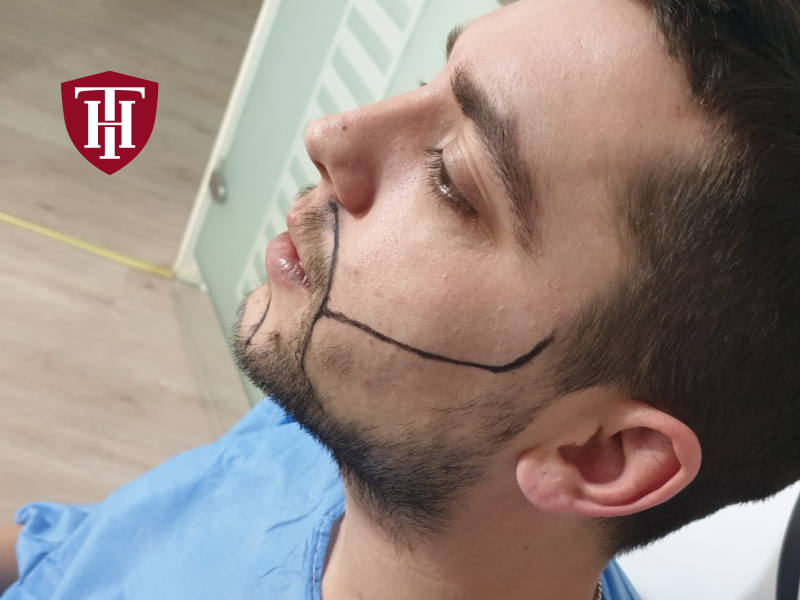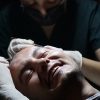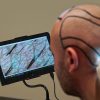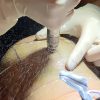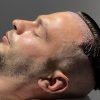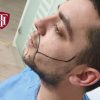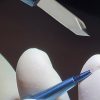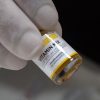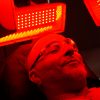Contents
Beard Transplant Turkey
Beard transplant turkey, is a form of treatment that has become as popular as hair transplant in recent years. The beard, which is an essential accessory for the aesthetic appearance of man, can experience congenital or subsequent problems due to an external factor. Since these problems create psychological pressures on people, they are sources for other problems in work, family or social life.
The problems that arise from the fact that beards are in profile and directly affect our appearance continue to negatively affect people’s lives.
For local gaps or the poor appearance of the beard, the beard transplant operation offers definitive solutions. After an operation of 7-8 hours, the person can easily have thick and strong beards in natural appearance.
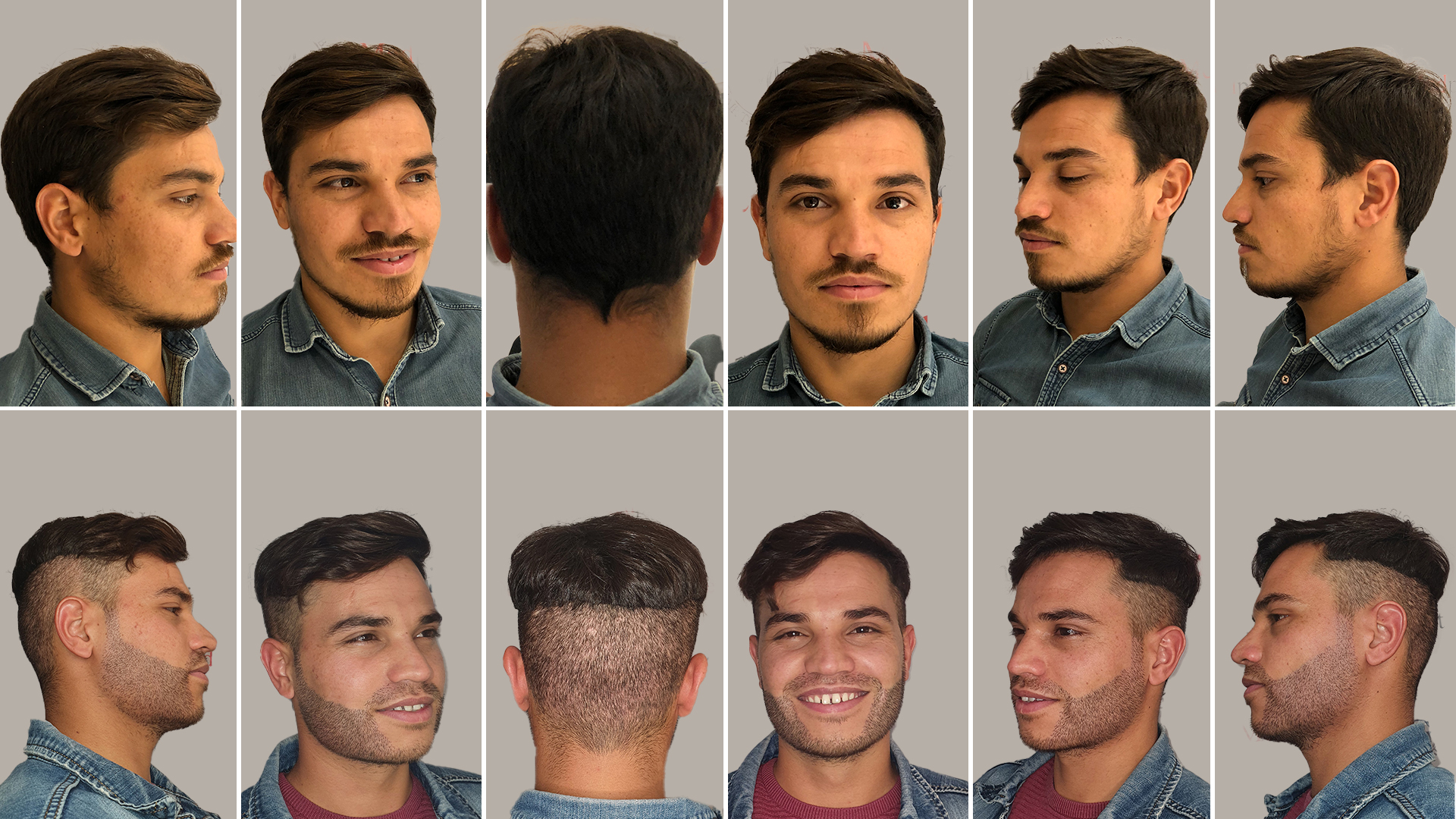
How is the Beard Transplant done?
The procedure is very similar to hair transplant. The hair follicles extracted from the nape of the neck, called the donor area, are transferred to the necessary areas within the planning to be carried out.
One thing to keep in mind is that the shape of the hair and beard is different. Although the beard and hair have a similar structure, they are not exactly the same shape. For this reason, when planning beard transplants, the donor area must be carefully analyzed and the follicles to be transferred carefully selected. Otherwise, an unnatural appearance may be found.
In hair transplant, it is attempted to select the strongest roots to obtain a dense appearance in the recipient area during the extraction of the graft from the donor area. This situation is slightly different in beard transplant. If the selection of the graft in the donor area is not done well and hair follicles stronger than the beard structure are transferred, an unnatural appearance will emerge that is never desired. For this reason, the grafts that provide the best fit to the face must be collected during the extraction process as they are selected.
Although beards are tougher than follicles, they are usually only one shape. Also, they are not in the form of a group as in the hair. For this reason, the hair follicles extracted from the donor area must be selected from follicles that bear a hair, if the donor area does not allow it, the follicles must be returned to the form of a beard by going through a series of processes after extraction.
The follicles, which return to their beard shape before the transfer, provide the best harmony with the facial tissue. The union of the graft tissue is complete. If an effective plan is made during the planning phase in which the directions and density of the beard are determined, the patient can have beards that are no different from the natural beards.
Another problem that needs attention is that the hair and beard loss procedure is different. While hair may show shedding or thinning from time to time due to genetic or external factors, such a change does not occur in beards. For this reason, the condition of the beard must be analyzed before the beard transplant operation and the density of the beard must be well adjusted during the opening of the canal. In poor planning, while there is a denser image in some places, a less dense image can occur in other areas. In this case, the natural image will be negatively affected and will continue to bother the person constantly.
It should be noted that a person’s beard wearing style may change over time. This parameter should be evaluated when giving the density and directions of the channel, and the possibility of the person wearing his beard long or short should be seen.

To whom is Beard Transplant applied?
If there is no health problem that prevents the person from undergoing the operation, the beard transplant can be applied to anyone who has a problem in the beard area due to external, congenital or subsequent factors (stress, use of cosmetics, healing after an accident).
Before the application, it should be verified if the person has a problem that will prevent the operation. If there is no problem at this point, the condition of the beards can be assessed.
Beard problem can develop due to congenital or genetic reasons. In such cases, people may think that a beard transplant operation will be unsuccessful and ineffective because there is no beard growth in the problem area, but this is wrong thinking. This problem can be easily avoided with a beard transplant operation to be performed in an area where beards do not grow. The congenital absence of the beard does not prevent the operation.
If the beard problem has occurred as a side effect of intensive use of cosmetics, excessive stress or other treatment, the situation should be evaluated. First, the source of the problem is determined, a treatment plan is made if necessary, an operation can be performed after the problem is resolved and the pressure applied to the beard is removed.
If the person has a beard problem due to a scar caused by a previous accident, he can easily choose the beard transplant operation. Since the structure of the scar will be different from normal tissue, it may be necessary to use supportive treatment after the operation. With supportive treatments, the nutritional quality is maximized and the nutritional problem caused by the scar can be minimized. No matter how much is requested, it should be noted that the success rate is limited in planning this type of scar tissue.
What are the beard transplant methods?
Beard transplant methods are similar to hair transplant methods.
In the harvesting stage of the grafts to be transferred; While the FUE (follicular unit extraction) technique is used, the sapphire or DHI choi-pen technique is applied to the receiving part. Although the technique to be used is similar, the planning must be completely different. The grafts to be selected during the extraction phase performed with the FUE (Follicular Unit Extraction) technique should be chosen from those closest to the roots of the beard in terms of structure. If there are local spaces or scarcity in the part of the beard of the person, the issue of choosing the follicles closest to the roots of the beard becomes even more important. Because roots in different shapes will cause two different appearances. This continues to negatively affect the person’s appearance.
Facial tissue is softer due to its structure. For this reason, it does not provide many opportunities for review processes. Soft facial tissue will be irritated during revision procedures. For this reason, the analysis should be carried out before the beard operation and should not be rushed.
In the placement of follicles, there are two different techniques that can be used, these are;
- The Sapphire technique,
- And the DHI choi-pen technique.
The objective of both techniques is to move the harvested grafts to the area where they are needed in the healthiest way. The technique to be used for the transfer process is determined at the preoperative analysis stage. Despite opinions like;
One technique is better than the other,
- Gives more natural results,
- Better recovery,
- You get much more density
these speeches do not reflect the truth. The choice of the technique to use is determined by the situation in the receiving area, although it varies according to the situation, with both techniques a natural and strong appearance of the beard can be obtained.
How should channels be opened in beard transplant?
If the sapphire transplant technique is applied, the recipient area of the extracted grafts is first prepared for placement. While steel blades were used for this process in the past, sapphire tips are used today. Sapphire material is one of the most compatible materials with human tissue. Being a durable material, it does not lose its shape. Therefore, the open canals with sapphire tips will be smooth and identical to each other, a more natural appearance is obtained after the operation.
Another important topic during the opening of the channels is the addresses of the channels. Canal directions should be given exactly the same as the person’s existing beard directions for a natural look. In the future, the person can have his beard long or short. The channel directions do not bother the person much if he has a long beard, but if the original directions are not taken into account for the short beard, they can bother the person quite a bit. person. This is also an undesirable situation.
Things to consider after beard transplant
Hair transplant and beard transplant are similar in postoperative procedure. The difference is that facial tissue is softer than the scalp. Also, while the scalp does not move, the beard area is a moving area. Roots transferred within 10 days postoperatively undergo complete union. During this time, care must be taken when eating, drinking, or speaking until the union is complete. It should be fed liquid or soft foods as much as possible. Roots in the mobile zone can be damaged or dislodged in a move.
In general, the things to consider after beard transplant can be summarized as;
- You should keep in touch with the doctor who performed the operation and follow their recommendations.
- Photos must be sent daily.
- If there is smoking, it should be reduced, it should be stopped completely if possible.
- Alcohol consumption should be avoided for 10 days.
- Beverages that thin the blood, such as coffee and green tea, should not be consumed for the first 3 days.
- The implanted area must be protected for 10 days against friction and blows.
- You should move very slowly during washing.
- For 10 days, the position on your back should be preferred for sleeping.
Can a beard transplant be done in cases such as burn scars?
Beard transplant may be preferred for burn problems on the face. Before the operation, the scar tissue caused by the burn should be analyzed. If the condition of the tissue is adequate, the beard transplant operation can be planned. It should be noted that the result cannot be guaranteed since the structure of the tissue will completely change after the burn.
Is beard transplant performed together with hair transplant?
The hair transplant and beard transplant app together is one of the favorite aplications of recent years. People who have problems in the hair and beard part can easily combine the two operations. Since the application and the postoperative period are similar in both operations, the person can carry out this process comfortably.
The state of the donor area must be favorable for the two operations to be carried out together. As the need for a large number of grafts will arise, if the person does not have enough follicle operations, the two should not be combined, but divided into sessions. Whichever area bothers the person the most, a study can be done for the other area after the donor area recovers (after 1 year).
If there is enough donor area;
The extraction is done using the FUE technique, as in single zone extractions. Some of the collected roots will be used on the head and others on the beard area, two separate extraction tips must be used.
When trying to get more hair grafts, beard grafts should be selected from single, thinner roots, which have a hair. Since grafts of different strengths and sizes will be harvested, at least two separate appliances should be used during harvesting. After the extraction process, the hair follicles to be used for hair and beards are separated. Depending on the implant technique determined after the separation process;
If the sapphire method is selected, the channels open and the placement process begins.
If the DHI choi-pen technique is selected, the appropriate tips are attached to the choi-pen implanters to be used and the direct implant process begins.
There is no need for two different applications after the operation. The procedure remains the same for hair and beard transplant.
Beard Transplant Prices 2022
The prices of the beard transplant operation vary according to many parameters, such as the receiving area, the date of the operation, the preferred package. You can get information about current beard transplant prices here.






